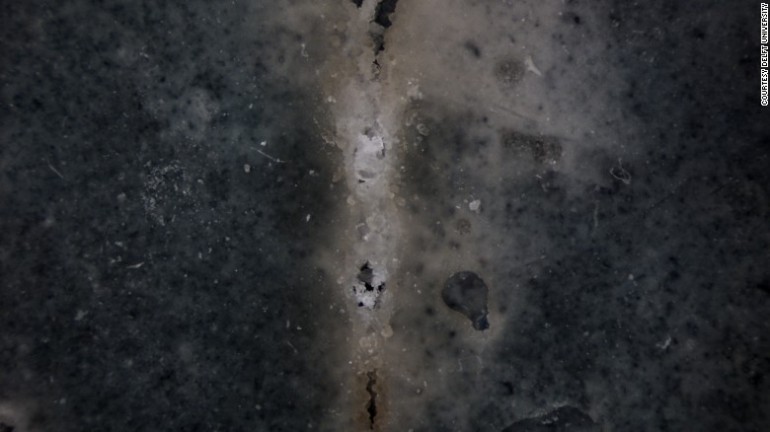
Self healing concrete, sounds impossible right? Well, guess what? …Self healing concrete actually exists. Concrete cracks, most will argue that it’s to be expected. No matter how much care is put into reinforcing or mixing concrete, it will eventually cracks. In some situations cracked concrete can lead to collapse. Professor and microbiologist, Henk Jonkers from Delft University of Technology in the Netherlands has come up with a new innovative type of concrete that actually heals its own cracks.
Professor Jonkers discusses that the problem with concrete with cracks is that water can come through, and if water gets into the steel reinforcements the steel rebars can corrode and this can lead to the structure collapsing. Jonkers calls the new concrete bioconcrete, saying that the concrete uses bacteria to heal itself. The mix is just like regular concrete except for one extra ingredient, the healing agent. The healing agent stays intact during the mixing process and only dissolves and activates if the concrete cracks and water enters.
Jonkers was challenged by a concrete technologist to create a self-healing concrete, which he began working on in 2006. It took three years for Jonkers to complete the task, there were a lot of obstacles to overcome. Jonkers discusses that in order to have a bacteria that can survive in such a harsh environment, the bacteria must be very dry and stone-like. The healing bacteria must be able to lie dormant for several years in the alkaline concrete before being activated by water.
Bacillus bacteria was just right for the job. Bacillus bacteria thrives in alkaline conditions and creates spores that can live for decades without oxygen or food. The first challenge was choosing a bacteria suitable for the job, the next hurdle was to make the bacteria produce a healing material for the concrete. Jonkers chose limestone for this job. However, the bacilli bacteria needs a food source to create limestone. His first thought was sugar, but sugar would weaken the concrete itself. He ultimately chose calcium lactate, which he put into small capsules with the bacilli bacteria, the capsules being made of biodegradable plastic. The capsules are added to the wet concrete mix.
When cracks eventually form the water enters the concrete and penetrates the capsules. The bacteria then germinate, multiply, and feed on the lactate. Doing this allows the calcium to to mix with the carbonate ions to create calcite, also known as limestone, which will then seal up the cracks. Jonkers is hoping that his new innovation could be the beginning of new age biological buildings.
This will be an interesting product to keep an eye on in the future. We’re not sure about the strength or other related properties, but we still think it’s pretty cool here at Custom Concrete Creations.



